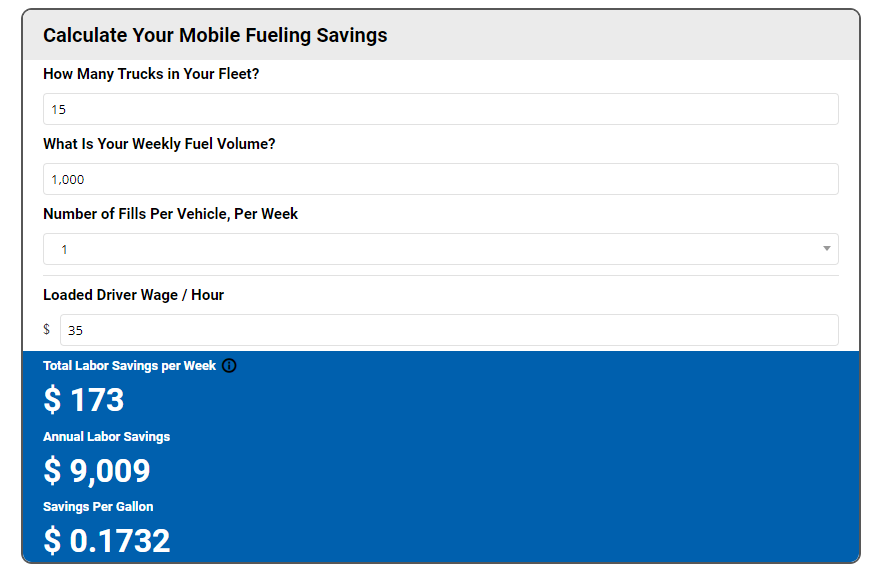
What Is It – Mobile Fueling
In today’s day and age, there are many ways to buy and receive fuel. Although bulk fuel and retail dominate purchasing, one fueling mode has become a new and emerging trend – mobile fueling. Although mobile fueling has been around for years, it did not become a popular fuel delivery option until the late 90s when the EPA released regulations requiring businesses to upgrade their fuel tank or remove them altogether.
Mobile fueling is a great method of fuel purchasing for fleets, especially those with off-road fuel needs or with high driver labor costs. Today, we’ll look at mobile fueling and why it’s growing in popularity.
What Is Mobile Fueling?
Mobile fueling is a fuel delivery service in which fuel is delivered on-site directly into fleets, stationary tanks, equipment, boats, or other machinery. Mobile fueling is also known as mobile refueling, wet-hosing, and wheel-to-wheel fueling.
Customers today are taking advantage of this fueling method to save fuel, money, and put time back in their driver’s hands. Not to mention the cost savings associated with liability from drivers not having to dispense their own fuel and worry about storage capacity.
How Does It Work?
To get started, a fleet will schedule a time for fuel delivery overnight or at another convenient time while drivers are away, so the delivery does not interfere with normal operations. The mobile refueling team will come in and fill each requested tank or unit before leaving. The pricing structure for wet-hosing will depend on the company and the logistics associated with the account but typically will be offered on a cost-plus basis or an indexed price differential.
When Is Mobile Fueling Worthwhile?
The first thing to consider when looking into direct vehicle fueling is the size of your fleet and where the fleet or equipment is located. This fueling mode is a convenient way for businesses to provide their fleets with access to fuel on-site and an excellent alternative for businesses that do not want their drivers touching fuel.
Typical wet-hosing customers are those with domiciled fleets of 10-15 units but may range all the way up to 200 units per fleet. Government entities such as schools sometimes utilize this service for their buses, construction companies will use it for heavy machinery that can’t be taken to a retail gas station, and some just need generators or reefers filled up because they do not have their own storage tank.
Benefits
There are significant labor savings involved when a fuel professional fills your vehicles. Drivers will no longer waste time at retail stations or searching for fuel in congested areas. They will start their shift with full tanks and never have to worry about fueling while on the road, putting more time back in their day to make more routes. A Geotab study of over 150,000 vehicles found that the average fuel stop takes 20 minutes and adds 2.2 miles to your driver’s route. An additional 20 minutes per shift per day can accumulate into increased productivity and eventually notable financial gain.
Businesses can reduce operating costs while ensuring they always have fuel where and when needed. They can take advantage of the opportunity costs and focus on the task at hand. Consolidated billing is another benefit of this fueling option. Most mobile fueling providers will send their customers one invoice for all the tanks rather than having to pay for each tank separately. All in all, mobile fueling is a win-win.
Is Mobile Fueling Right for You?
Mansfield offers a free tool that lets you calculate your potential labor savings should your business convert to a mobile fueling service. Contact an expert at Mansfield to learn more about this cost-saving opportunity.
This article is part of Daily Market News & Insights
Tagged: Mobile Fueling, Mobile Refueling, Wet-hosing, Wheel-to-wheel
MARKET CONDITION REPORT - DISCLAIMER
The information contained herein is derived from sources believed to be reliable; however, this information is not guaranteed as to its accuracy or completeness. Furthermore, no responsibility is assumed for use of this material and no express or implied warranties or guarantees are made. This material and any view or comment expressed herein are provided for informational purposes only and should not be construed in any way as an inducement or recommendation to buy or sell products, commodity futures or options contracts.






